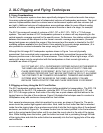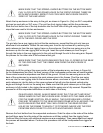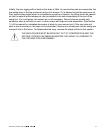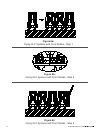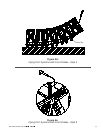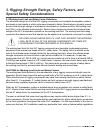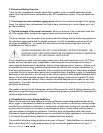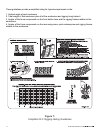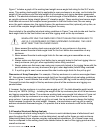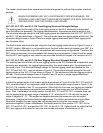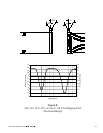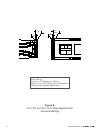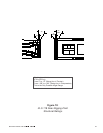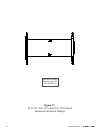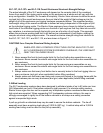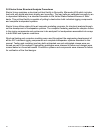
ELECTRO-VOICE
®
18
Figure 7 includes a graph of the working-load weight-versus-angle limit rating for the XLC enclo-
sures. This working-load weight limit is applicable to every enclosure in an array, and includes the
weight of that enclosure plus the total weight of all enclosures and rigging hardware suspended
below it. The absolute enclosure angle is the vertical angle of that enclosure, where 0° represents
an upright enclosure facing straight ahead (0° elevation angle). These working-Ioad-versus-angle
limits take into account the complex forces generated in the front button bars, the rear swing
arms, the quick-release pins, the rigging frames, the enclosures and the (optional) pull-up line, as
a result of the complex weight distribution throughout the array.
Also included in the simplified structural-rating guidelines in Figure 7 are side-to-side and front-to-
back angle limits for the front button bars and rear rigging arms on the top enclosure.
WHEN APPLYING THE SIMPLIFIED STRUCTURALRATING GUIDELINES TO
ANY XLC LOUDSPEAKER SYSTEM SUSPENDED OVERHEAD, THE USER
MUST OBEY THE FOLLOWING RULES:
1. Never exceed the working-Ioad-versus-angle limit for any enclosure in the array.
2. Never exceed the side-to-side angle limits for the front button bar assemblies on any
enclosure.
3. Never exceed the side-to-side angle limits for the rear swing arm assemblies on any
enclosure.
4. Always make sure that every front button bar is securely locked in the front rigging tube on
every enclosure (and grid, when applicable) before lifting overhead.
5. Always make sure that every rear swing arm is securely locked in the rigging frame with the
quick-release pins on every enclosure (and grid, when applicable) before lifting overhead.
6. If a pull-up grid is used, never exceed the side-to-side angle limits for the pull-up grid.
Discussion of Array Examples: For example, if the top enclosure in a column was angled down
30°, the enclosure working-Ioad-versus-angle limit from the simplified structural-rating guidelines
shown in Figure 7 would indicate that a total of 1950 pounds (885 kg) could be safely suspended.
This would include the weight of the top enclosure plus all of the enclosures and rigging sus-
pended below.
If, however, the top enclosure in a column was angled up 30°, the total allowable weight would
then only be 1863 lb (845 kg) - including the weight of the top enclosure plus all of the enclosures
and rigging suspended below. The enclosure working-load-versus-angle limit shown in Figure not
only applies to the top enclosure in an array column, but also applies to every enclosure in an
array column. In arrays where a pull-up grid is not used, the top enclosure is always the limiting
factor because it supports the most weight. However, in arrays where a pull-up grid is used to
achieve substantial downward angles, it is possible that a lower enclosure could be the limiting
factor.
3.4 Complex Structural-Rating Analysis
For a complete structural-rating analysis, the forces in each individual piece of attachment hard-
ware throughout the XLC system must be determined, as well as the forces on each enclosure.
Determining these forces requires complex mathematical calculations. All of these forces must
then be compared to the working-load limits detailed below for each of the rigging points and the
overall enclosures.



